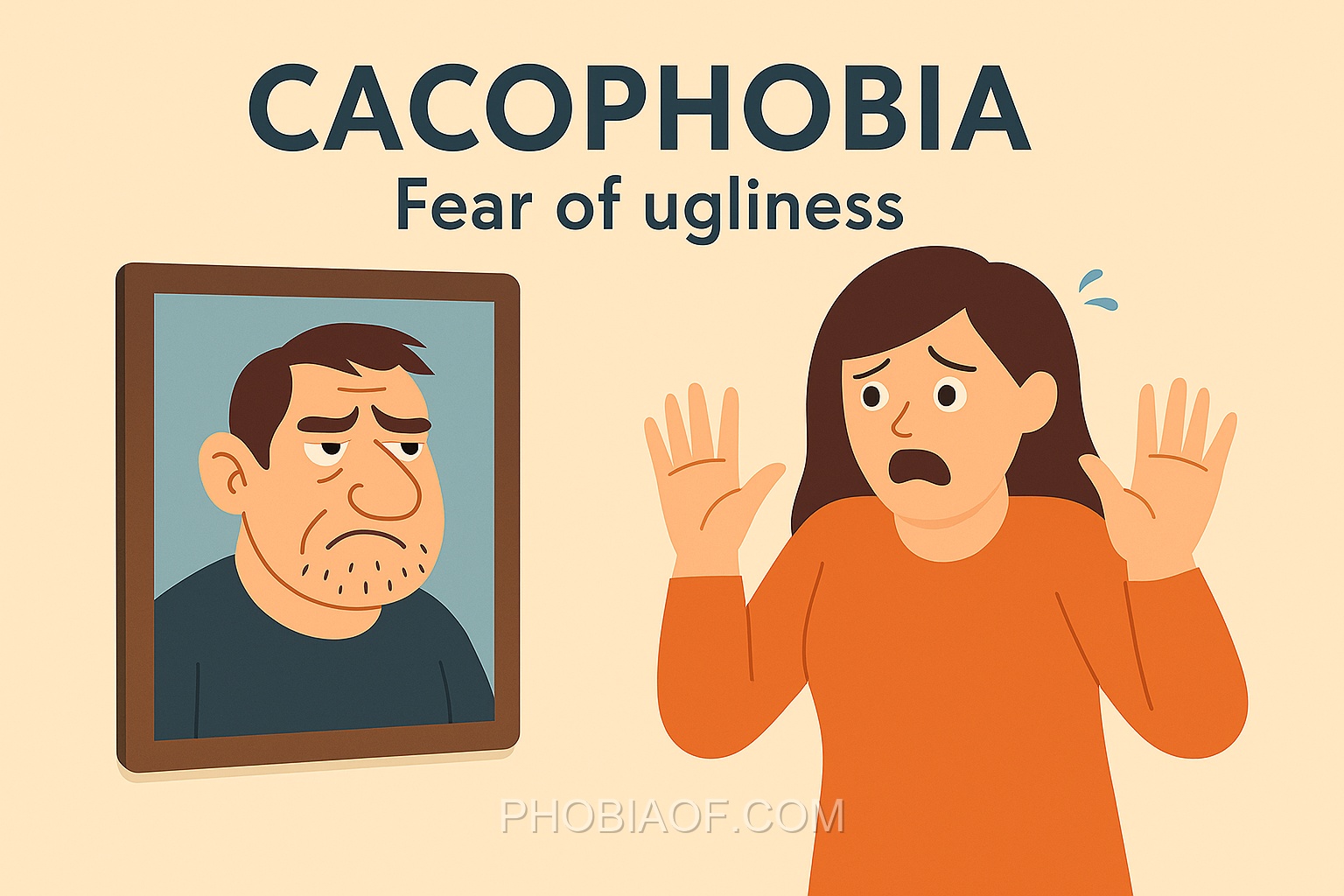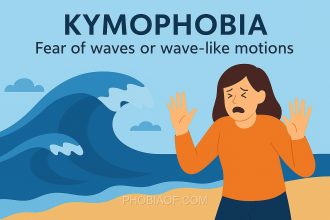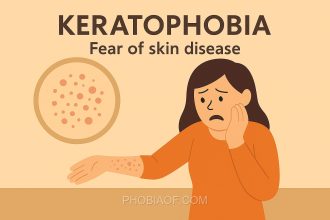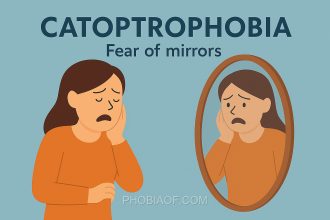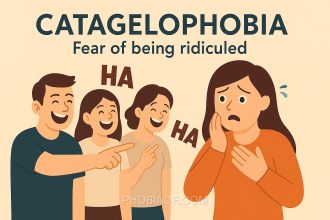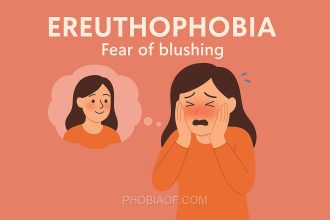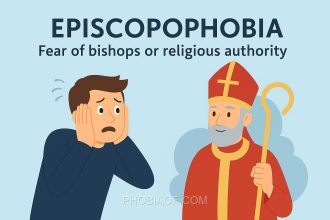Have you ever felt an overwhelming fear or anxiety when encountering something you perceive as unattractive? If so, you might be experiencing a condition known as Cacophobia.
Cacophobia is the fear of ugliness. The term is derived from the Greek words “kakos,” meaning bad or ugly, and “phobos,” meaning fear. This phobia can manifest as an intense and irrational dread of anything considered unsightly, whether it is an object, a person, or even a certain setting.
For those who suffer from Cacophobia, everyday life can be challenging. The fear can lead to avoidance behaviors, where individuals might steer clear of situations or environments they associate with ugliness. This avoidance can limit social interactions and opportunities, affecting both personal and professional aspects of their lives.
- Individuals may experience anxiety or panic attacks when exposed to perceived unattractiveness.
- The fear can lead to social isolation, as sufferers might avoid places or events where they fear encountering ugliness.
- Cacophobia can also impact self-esteem, particularly if individuals are concerned about their own appearance.
Understanding Cacophobia and approaching it with empathy is crucial. Like many phobias, it is not simply a matter of preference or opinion but a genuine psychological condition that can significantly impact a person’s quality of life.
Causes of Cacophobia
Cacophobia, the fear of ugliness, can arise from various factors. Understanding these causes can help in addressing the phobia effectively. Below are some common reasons why someone might develop this fear:
- Genetic Predisposition: Just like other phobias, cacophobia can have a genetic component. If there is a family history of anxiety disorders or phobias, an individual might be more susceptible to developing this specific fear.
- Traumatic Experiences: A past traumatic event related to perceived ugliness, whether experienced personally or witnessed, can trigger cacophobia. This could include bullying, negative comments, or social rejection based on appearance.
- Learned Behavior: Observing and mimicking the fearful reactions of others can contribute to cacophobia. If a child grows up in an environment where ugliness is constantly criticized or ridiculed, they may learn to fear it as well.
- Psychological Factors: Low self-esteem and body image issues can exacerbate the fear of ugliness. Individuals who struggle with their own appearance might project these insecurities onto others, developing a heightened fear.
- Environmental Influences: Media portrayals and societal standards of beauty can play a significant role. Constant exposure to idealized beauty through media can create unrealistic expectations and fears of what is deemed unattractive.
Some theories suggest that cacophobia might also be linked to an evolutionary instinct to avoid disease or contamination, which historically could be associated with less aesthetically pleasing appearances. However, this theory is still under exploration and requires more research for substantial backing.
Understanding the root causes of cacophobia is crucial for developing effective coping strategies and treatments. Addressing these underlying factors can help individuals lead healthier, more fulfilling lives.
Symptoms of Cacophobia
Cacophobia, the fear of ugliness, can evoke intense fear or anxiety in individuals who suffer from this phobia. Recognizing the symptoms is crucial for understanding and managing this condition. Here are some common symptoms that may indicate someone is experiencing cacophobia:
- Intense Fear or Anxiety: Individuals may experience overwhelming fear or anxiety when confronted with what they perceive as ugliness.
- Panic Attacks: Sudden episodes of intense fear that trigger severe physical reactions, including palpitations and chest pain.
- Sweating: Excessive sweating may occur, particularly in situations that trigger their phobia.
- Rapid Heartbeat: An increased heart rate often accompanies feelings of fear or anxiety.
- Trembling or Shaking: Physical trembling or shaking can be a sign when confronted with feared stimuli.
- Shortness of Breath: Difficulty breathing may occur, leading to a sensation of suffocation.
- Avoidance of Triggers: Individuals may go to great lengths to avoid situations or places that might expose them to perceived ugliness.
- Overwhelming Dread: Persistent feelings of dread or impending doom related to encountering ugliness.
- Emotional Distress: Feelings of helplessness, shame, or depression may arise due to their phobia.
If cacophobia is severe, these symptoms can significantly interfere with daily life, affecting personal relationships, work, and social activities.
Treatment for Fear of Ugliness (Cacophobia)
It’s important to know that fear of ugliness, or cacophobia, is a treatable condition. With time, dedication, and the right approach, individuals can manage and even overcome this phobia. Here, we outline various treatment options and coping strategies that can help you on your journey to a more peaceful mindset.
Therapies
Several therapies have proven effective in treating cacophobia:
- Exposure Therapy: This approach involves gradually facing the fear in a controlled and safe environment. By slowly exposing oneself to the idea or situations related to perceived ugliness, individuals can desensitize their fear response over time.
- Cognitive-Behavioral Therapy (CBT): CBT is highly effective in changing the negative thought patterns associated with cacophobia. Through CBT, individuals learn to recognize, challenge, and replace fearful thoughts with more positive and realistic ones.
- Counseling: Speaking with a mental health professional can provide support and guidance. A counselor can help you explore the root causes of your fear and develop personalized coping strategies.
Coping Strategies
In addition to professional therapies, several self-help techniques can complement treatment:
- Relaxation Exercises: Techniques such as deep breathing, progressive muscle relaxation, and guided imagery can reduce anxiety and promote a sense of calm.
- Meditation: Regular meditation practice can help you develop mindfulness, allowing you to observe fearful thoughts without becoming overwhelmed by them.
- Support Groups: Joining a support group can provide a sense of community and understanding. Sharing experiences and coping strategies with others who face similar challenges can be incredibly empowering.
Medication
In some severe cases, medication such as anti-anxiety medications might be considered to help manage symptoms. However, it is generally recommended to focus on therapy and coping skills as the primary means of treatment.
Remember, if cacophobia is interfering with your daily life, seeking professional help is a crucial step. With the right support, you can work towards overcoming this fear and improving your quality of life.
Take the first step today by reaching out to a mental health professional who can guide you on your journey to recovery. You are not alone, and help is available.
Conclusion
Understanding the causes and symptoms of cacophobia can be a powerful first step in addressing this fear. By recognizing the underlying factors and how they manifest, individuals can begin to dismantle the hold that the fear of ugliness may have on their lives. Awareness fosters empowerment, enabling those affected to explore strategies and resources that can aid in managing their phobia.
It is important to remember that many people successfully overcome or manage their phobias with time and the right support. Whether through self-help techniques, professional therapy, or medical advice, there are numerous avenues available for those seeking to reduce the impact of cacophobia on their daily lives. No one has to face this journey alone, and seeking help is a courageous and positive step forward.
If you or someone you know is struggling with cacophobia, consider reaching out to a therapist or discussing your concerns with a doctor. They can provide guidance tailored to your needs and help pave the way towards a more confident and fulfilling life.
With understanding, patience, and support, overcoming the fear of ugliness is within reach. Embrace the journey towards healing with optimism and know that brighter days lie ahead.
